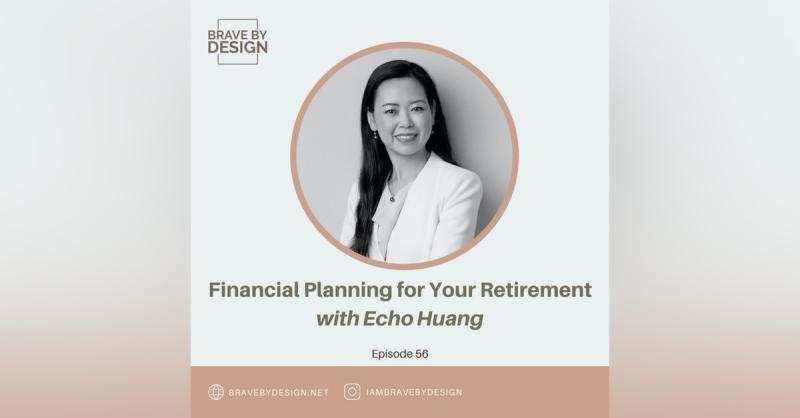Attention Married Couples: How to Get in Sync with These Nine Essential Money Practices
Oh, the dichotomy of money talks with your spouse. They’re so vital to have, yet they are often uncomfortable. So, not surprisingly, most married couples aren’t properly communicating about financial habits and money values.
When a couple marries, they bring their individual money values into the union, which can be as unique as their fingerprints. These values have been created over a lifetime, often through observing parents, and most people are deeply entrenched in them. The trouble is that most couples don’t discuss these values.
The money discussion is an important one to have, though. To make the topics easier to broach, think of your spouse as a business partner. Viewing your household as an operating business may help set emotion and discomfort to the side and allow you to engage in meaningful conversations.
If you’re ready to get on the same financial page as your spouse, check out these nine ways couples can get in sync and avoid money conflicts.
Maintain Separate Bank Accounts, Plus One Joint Account
One common suggestion for married couples—especially those with divergent money values, like one saver and one spender—is to maintain individual bank accounts along with a joint account for shared expenses. This leaves each spouse some financial freedom while both commit to following any guidelines agreed upon for the joint account. All shared bills, such as utilities, mortgage or rent, car payments, food, and insurance, should come out of the shared account. How much each spouse contributes (especially if there is a difference in earnings) should be discussed, as a 50/50 split may not be feasible. What’s most important is that the shared account can track all household expenses through a system that both spouses agree on.
Create a Realistic Household Budget
If you’re taking the step of setting up a joint bank account for household expenses, you’ll need to consider all your bills. Understanding how much it costs to live your lifestyle as a couple is paramount to knowing how much you need to spend each month, as well as how much you want to save down the line. Tracking your spending and understanding how much is coming in and going out is a great way to get a handle on monthly expenditures. If finances are tight, careful budgeting also offers an opportunity to discuss all the extras (coffee, lunches out, pricey gym memberships, fitness coach, etc.) and decide together how to move forward with shared financial goals in mind.
Set Financial Goals as a Team
If you haven’t established any financial goals yet, it’s time to get started. Once you have your monthly budget determined, the next step is to discuss your long-term goals together. What do you want to do in retirement? Where do you want to live? What about the kid’s college costs? This is the time to layout your hopes, dreams, and fears for the future. Many couples find they have different goals, so the earlier you can start talking about this, the more time you have to devise a joint plan for your financial future.
Save, Save, Save
This is a big, important goal that every married couple should commit to. You need to be saving, even when times are tight. One of the most straightforward and most painless ways is to max out your 401(k) contributions to take full advantage of any employer match opportunities. When it comes to retirement savings, a good goal is to be saving at least 10 percent of your yearly income towards retirement.
If you have children, starting a 529 education savings account and making regular contributions can help the cost of college down the line. On top of that, have a joint emergency savings account that you can access for emergencies that may arise. Consider contributing to it every pay period through an automatic funds transfer.
While it may seem overwhelming to set aside so much, having enough savings can be the difference between a rough patch and a disaster, so make it a priority.
Handle Debt as a Team
In many marriages, each spouse brings their own debt, whether from student loans, credit cards, or something else. It’s vital to tackle these individual debts as a team, even if the debt is your spouse’s and happened before you were married. Remember that debt can affect you both, be it in quality of life or in the ability to get a line of credit or buy a house, so it’s critical that you be all-in when it comes to a payoff plan. Develop a plan to pay down any high interest, toxic debt first, then go from there. There are many ways to tackle debt—the important thing is that you do it together.
Live Within Your Means
A major step in paying down your debt is to start living within your means. Make sure you are taking in more than you are spending each month. This may mean a period of belt-tightening, but when both of you commit to it, it’s possible to quickly pay down debt. While taking these steps, keep your eye on the bigger picture—your shared financial goals and values.
Check-in Regularly
Life has a way of interrupting even the best-laid plans, so you mustn't stop discussing your financial goals after the initial discussion and planning. Schedule periodic meetings to check in with one another, keeping an eye on your budget and shared goals. Schedule these check-ins for quiet times when you aren’t likely to be disturbed. You want to ensure that you can have open, forthright discussions to continue moving forward together on a firm financial footing.
Face Hard Times Together
Even if you and your spouse are doing everything right, you could still find yourself falling on hard times. An unexpected job loss or medical issue, for example, could quickly deplete your savings and throw all your hard work out the window. Prepare for possible hard times together by aiming to have an emergency savings fund of three months to six months of your living expenses that is not invested in stock markets or inside your retirement accounts. Keep the emergency savings fund in a savings account earning higher interest than a checking account.
For example, Ally.com’s online savings account pays higher interest than most banks, currently at 0.60%. If you own a home, consider having a home equity line of credit (HELOC) available to you so that you do not need to have too much in the emergency fund. Suppose you tap into it to pay for unexpected expenses. In that case, the interest rate of HELOC is generally lower than credit cards and, you only pay interest on the HELOC debt balance.
Maintain proper health and life insurance and get regular medical checkups. Take care of your vehicles and home as best you can. Planning together can solve a host of financial issues, as well as keeping your marriage strong in the face of adversity.
Don’t Keep Secrets
This tip ranks high, as failing to follow it can have a profound impact on a relationship. Many marriages have suffered the fate of “financial infidelity”—that is, hiding spending, debts, or other financial issues from a spouse. Secrets of this nature are corrosive and lend themselves to more significant problems down the line. It’s much better to be honest and work through financial issues together, rather than getting caught up in deliberate deceit.
While money issues can easily cause discord in a marriage, they don’t have to. By following the nine steps above, you can stay in sync with your spouse and remain on firm financial footing together.
If you’d like to do a self-check with your finances, I invite you to read my book,
Own Your Future, where I share seven life-guiding principles and give you tools and education to think properly about your money. Today is the best day to start on your path to financial independence!













